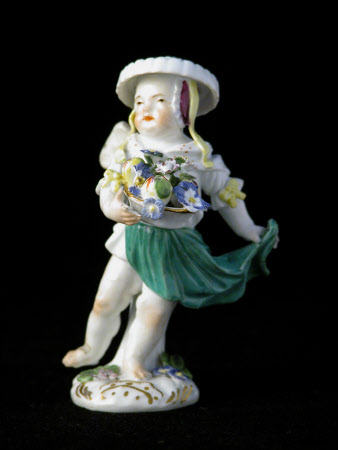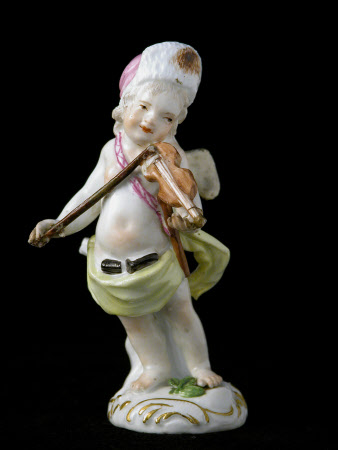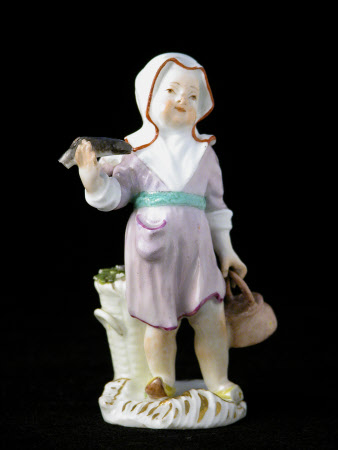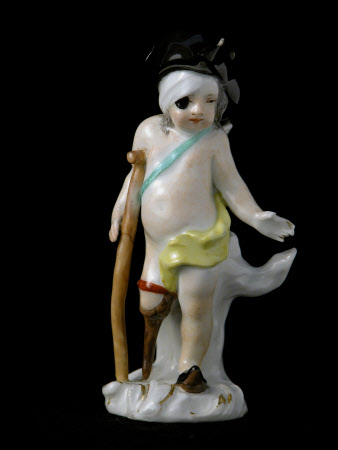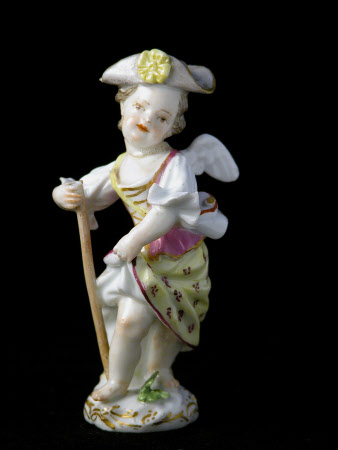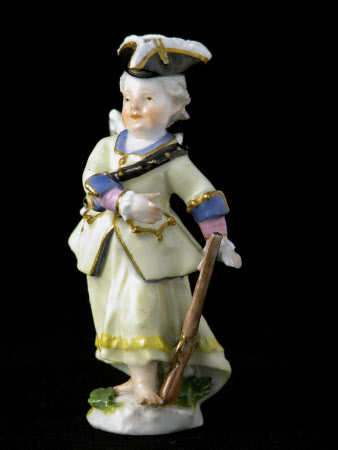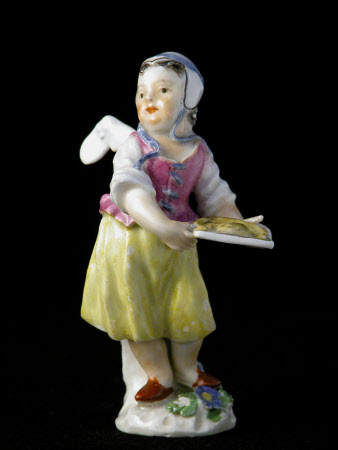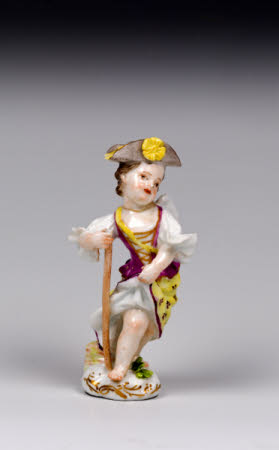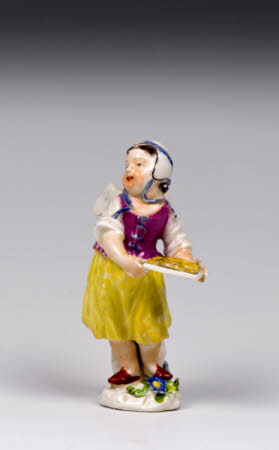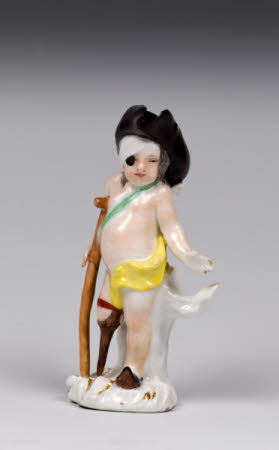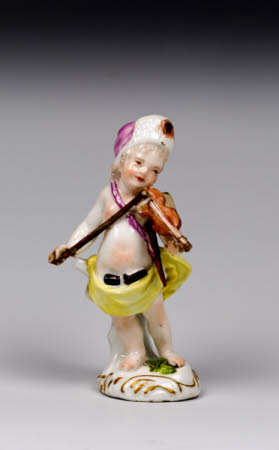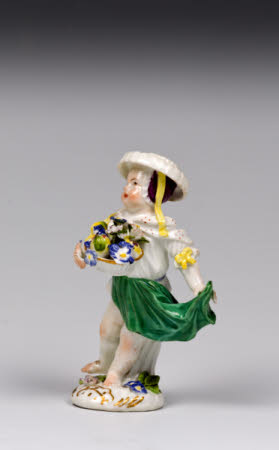Figure
Meissen Porcelain Factory
Category
Ceramics
Date
1749 - 1764
Materials
Hard paste porcelain
Measurements
7 x 2 cm
Place of origin
Meissen
Order this imageCollection
Saltram, Devon
NT 870957
Caption
These ‘amorini’ (cupids) were designed to be cheeky and slightly provocative conversation starters for guests at the dinner table. The dessert course in particular gave an opportunity for elaborate display. Horace Walpole wrote in 1750 that, "all the geniuses of the age are employed in designing new plans for dessert." Wax figures and sugar paste models were used as well as porcelain figures. These were displayed amongst table-top garden, architectural and countryside scenes and surrounded by equally elaborate food such as fresh and sugared fruits, sweetmeats, jams, jellies and creams. Saltram was a house for entertaining – friends and family were regularly hosted for everything from picnics in garden buildings to grand dinners in the dining room. Perhaps these amorini provided conversation at one such event?
Summary
Set of seven figures known as Amorini or cupids . A moulded figure set in hard paste porcelain decorated in polychrome enamel and produced at the Meissen factory, Germany. Marked on the centre, reverse with the blue crossed swords mark of Meissen. The Saltram Collection (1967): No 264T, p.60
Full description
In the mid-eighteenth century, the dessert tables of English aristocrats were often decorated with small porcelain sculptures of amorini in delightful disguises, identified as Cupid, Venus or simply 'loves in disguises.' depending on their gender. These semi-erotic, coquettish figures were probably inspired by a painting of 1728 by Charles Antoine Coypel of partially clothed children masquerading as adults, satirising the vanity of the French court in their performance of the Toilette. The painting, acquired by Madame de Pompadour in 1750 was circulated through an engraving by Francois-Bernard Lepicie, Jeu d'enfans, published in Paris in 1731. Other sets of similar figures were designed representing street traders or courtiers. The figures were apparently modelled at Meissen by Johann Joachim Kandler (1706-75) between 1749 and 1755 when copied made at Chelsea were first recorded. They were probably intended for the French market. Adapted from 'Ceramics: 400 Years of British Collecting in 100 Masterpieces' by Patricia Ferguson, 2016.
Provenance
At Saltram by 1951 and accepted by HM Treasury in lieu of full payment of Estate Duty from the Executors of Edmund Robert Parker (1877-1951), 4th Earl of Morley
Makers and roles
Meissen Porcelain Factory, manufacturer
References
Ceramics: 400 Years of British Collecting in 100 Masterpieces, Philip Wilson Publishers, 2016, p. 100-101 The Saltram Collection (1967):, No 264T, p.60.
